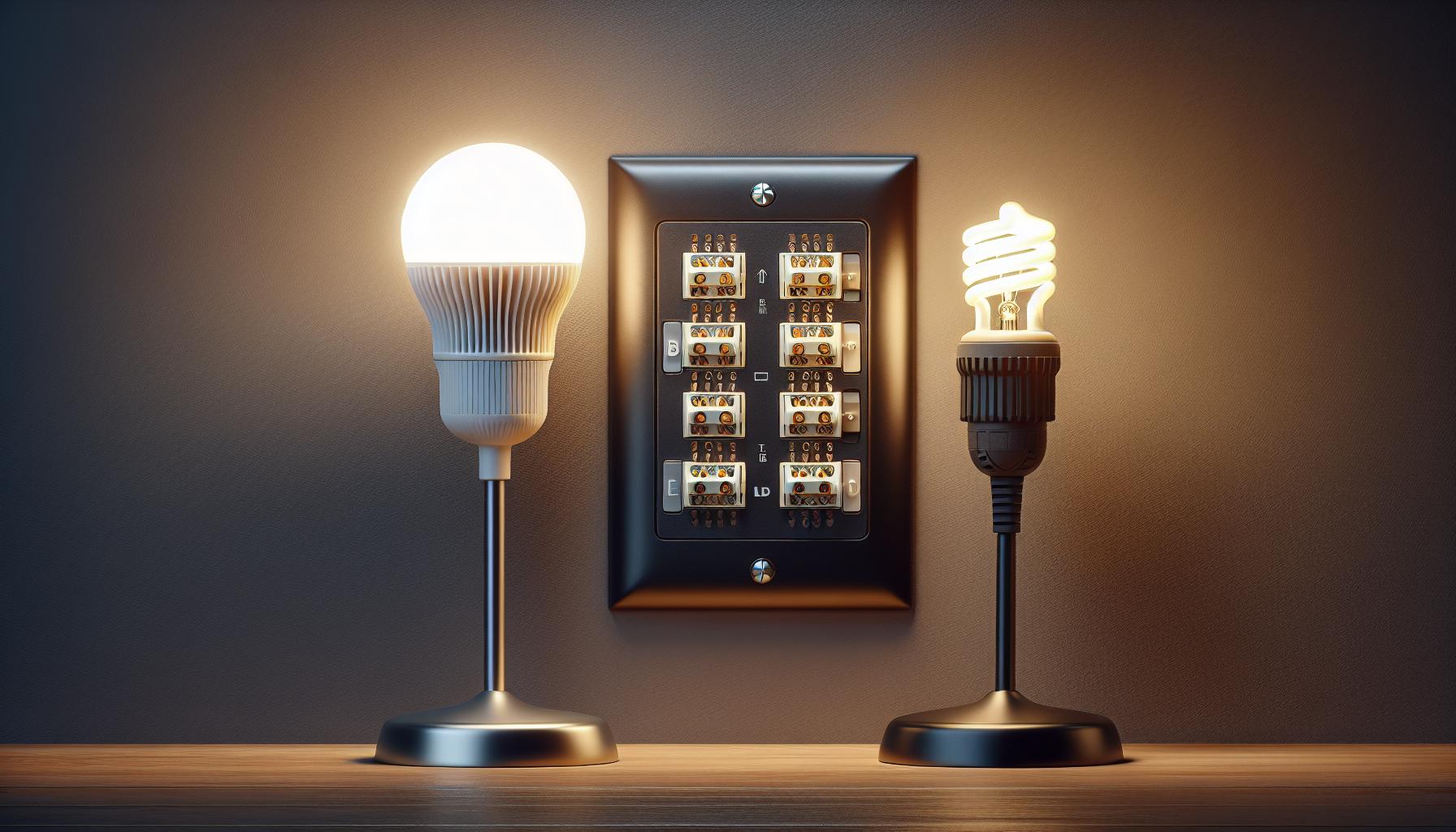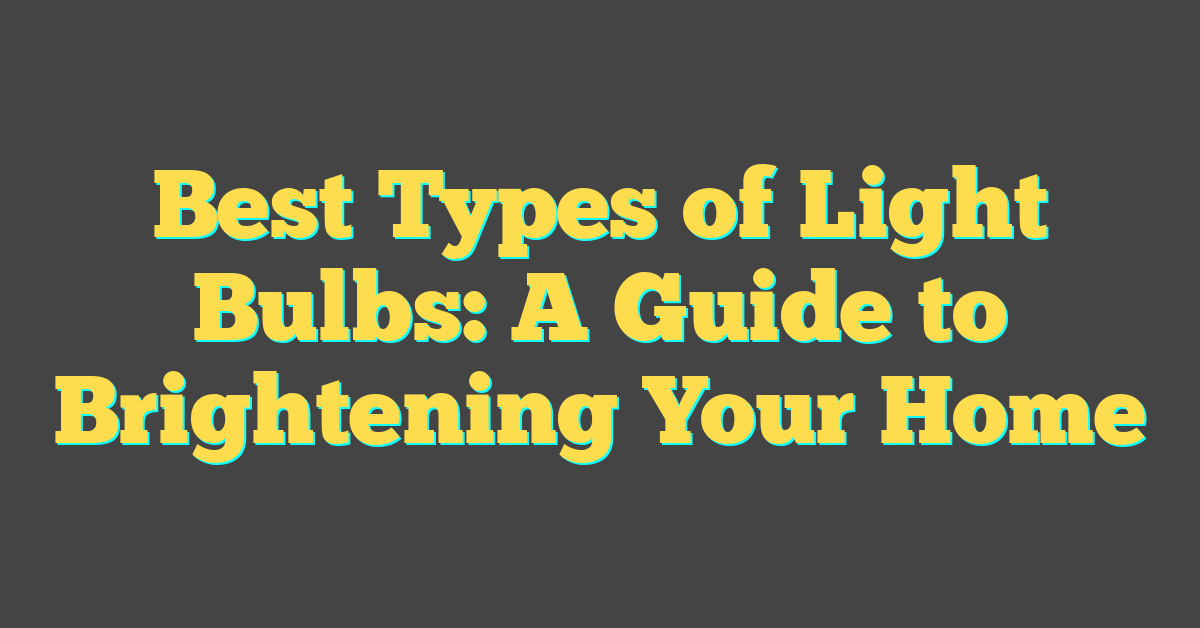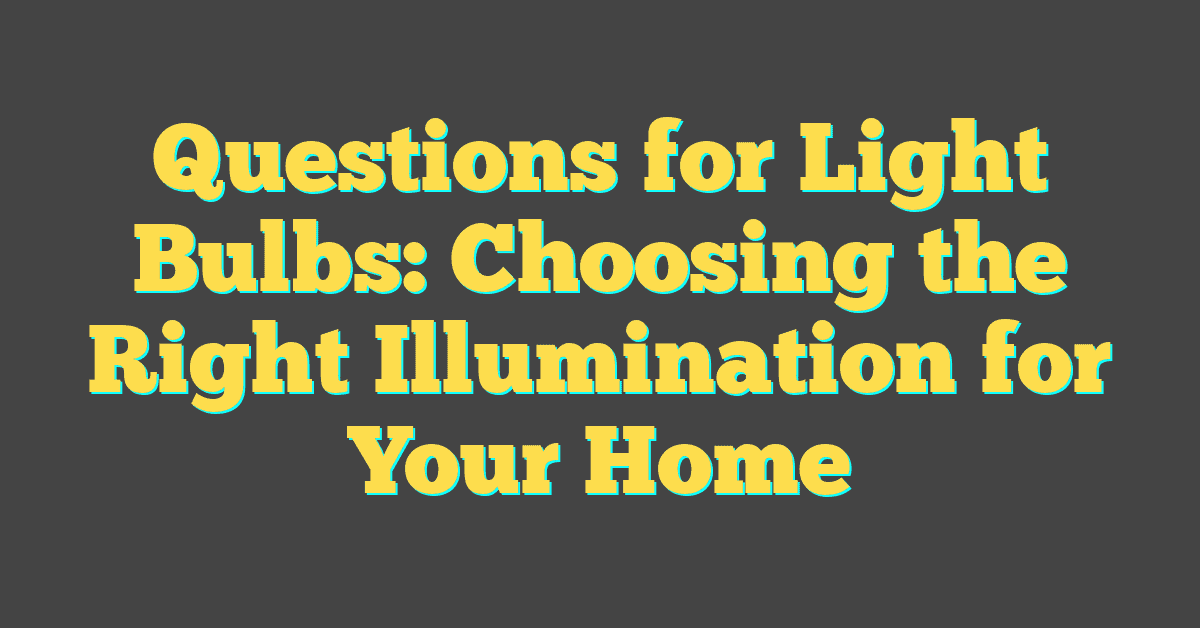So, you’ve decided to jump on the LED bandwagon, and who could blame you? They’re energy-efficient, long-lasting, and quite the upgrade from your old bulbs. But here’s the kicker: when you go to dim them, you might notice they don’t play nice with your current dimmer switch. What gives?

Turns out, not all dimmer switches are created equal, especially when it comes to LEDs. You’ve got to match them up correctly or you’ll face flickering lights and a shortened lifespan for your bulbs. Don’t worry, though, it’s not as complicated as it sounds, and you’re about to find out exactly what you need to keep your lights glowing perfectly at every level.
Why do LED bulbs need a special dimmer switch?
When you’re delving into the world of home lighting, especially as you embrace energy-efficient LEDs for your DIY projects, it’s essential to understand the nitty-gritty of dimming these advanced bulbs. Unlike traditional incandescent lights, LEDs require a specific kind of dimmer to function correctly.
Why is that, you ask? Well, LEDs operate with very low power needs and at a much cooler temperature. A regular dimmer switch is designed with a higher electrical load in mind, like that of incandescent or halogen bulbs. The result is an overload of power to your LEDs, leading to that all-too-common flickering or worse, a dramatically shortened life for your bulbs.
Remember, your trusty old dimmer switch controls light by cutting off the amount of electricity sent to the bulb. Incandescents, being the power guzzlers they are, could handle this rough treatment. However, LEDs work through a more refined, electronic mechanism that doesn’t take well to these abrupt power fluctuations.
Here’s a bit more technical detail for the DIY aficionado in you: LEDs require what’s known as a Leading Edge or Trailing Edge dimmer switch to regulate light. These switches are specially engineered to lower or increase the current in a smooth, gradual manner suited for the delicate makeup of LED lights.
Matching the right dimmer to your LED bulbs isn’t just about avoiding the annoyance of flickering lights; it’s about preserving the longevity and efficiency of your lighting setup. With LEDs, you’ve invested in sustainability and cost savings – don’t let the wrong dimmer switch undermine that.
Highlighted here are some key points when considering dimmers for LED bulbs:
- Lower Power Requirement
- Temperature Control
- Refined Dimming Mechanism
- Enhanced Longevity and Efficiency
Now that you’ve got the why behind the specialized dimmer switch down, let’s dive into the how – how to pick the perfect companion for your LED lighting that ensures optimal performance and ambiance for your space.
Understanding the differences between dimmer switches for LED bulbs and traditional bulbs

As you delve into the world of home lighting, you’ll quickly discover that not all dimmer switches are created equal—especially when you’re trying to match them with LED bulbs. Traditional bulbs, like your old-school incandescent lights, were pretty simple creatures. They loved the straightforward on-off approach of the regular dimmer switches you’ve probably used for years.
LED bulbs, however, are a different beast altogether. These energy-saving marvels are designed with modern technology that’s sensitive to fluctuations in power. What this means for you is that using a traditional dimmer switch can lead to a few hiccups. You might see flickering when you try to dim your LEDs, or the bulbs may not dim as much as you’d like, leaving you with a room that’s brighter than expected during your midnight fridge raid.
Let’s break it down to specifics:
- Load Compatibility: Regular dimmer switches were engineered for the higher loads of incandescents. LEDs, by contrast, operate at significantly lower wattages.
- Wiring and Electronics: Older dimmers simply can’t handle the complex electronics of LEDs; they were never designed to.
To keep your LEDs glowing happily without the strobe-like effects of a disco, you’ll need to opt for an LED-compatible dimmer switch. These switches are tailored to the lower power requirements and delicate circuitry of LEDs, ensuring a smooth dimming experience – think of it as a gentle sunset rather than a light switch rave.
Here’s a simple way to compare:
| Feature | LED Dimmer Switch | Traditional Dimmer Switch |
|---|---|---|
| Electrical Load Handling | Lower wattage | Higher wattage |
| Technology Compatibility | Designed for LEDs | Designed for incandescents |
| Dimming Range | Extended and smooth | Limited and less smooth |
| Potential for Bulb Longevity | Enhanced | Reduced |
« What is Wrong with LED Light Bulbs? Uncover Dimmer Dilemmas & Fit Fixes
How Did Light Bulbs Make Life Easier? Discover Lighting’s Evolution »
Remember, your lights set the scene for every moment in your home, from the burst of morning sunshine to the soft whisper of late-night whispers. To get the ambiance just right, you’ve got to pair your LEDs with the perfect partner – and that’s a dimmer switch specially designed for your sleek and energy-efficient bulbs.
The potential problems of using a standard dimmer switch with LED bulbs

You’re a DIY enthusiast, and you know how lighting can change the entire ambiance of a room. When you’ve decided to make the switch to LED bulbs, paired with your existing dimmer switches, there’s a bit of a learning curve you might hit.
Mismatched Technology might be the first hurdle. Traditional dimmer switches are designed for higher wattage incandescent bulbs. LED bulbs draw much less power, so a standard dimmer might not recognize that a bulb is connected. What does this mean for you? Well, you may face:
- Flickering Lights: The most common symptom you’ll notice if your dimmer isn’t LED-compatible. Instead of a smooth transition, your LEDs might start to flicker as if they’re throwing a miniature light show.
- Premature Burnout: Not quite the burning out you get from too many DIY projects on the go! LED bulbs could fail way earlier than their expected lifespan if the dimmer causes too much stress on their electronic drivers.
- Limited Dimming Range: Expecting your room to go from lit-for-a-party to a soft glow suitable for a cozy night in could end up in disappointment. Standard dimmers might not adjust LED brightness smoothly, leaving you with a less than satisfactory range of light levels.
Understand Inconsistent Performance too. Some LED bulbs might seem to work with your old dimmer, but it’s a bit of a gamble. Varying results like unstable light levels and even audible buzzing are clues that your LEDs are just not jiving with the old technology.
What about Electrical Noise? Yes, that’s a thing. Incompatibility between dimmer switches and LED bulbs can produce electrical ‘noise’ which interferes with other electronic devices. The smooth operation you’re looking for gets a bit… staticky.
Remember, it’s worth taking a look at LED-compatible dimmers to protect your investment in LED bulbs, keep things flicker-free, and maintain that calming atmosphere you love so much. With the right setup, your DIY lighting project will be nothing short of brilliant.
The benefits of using a special dimmer switch for LED bulbs

When you’ve invested in LED lighting for your home, you’ll want to make sure they perform at their best. Special dimmer switches designed for LED bulbs can make all the difference. Unlike their traditional counterparts, these dimmers are built to handle the lower wattage of LEDs, ensuring smooth operation and extended bulb life.
Let’s dive into what sets these switches apart. First and foremost, LED dimmer switches help prevent the flickering issues you might have experienced with standard ones. They work by providing a more refined, tailored power supply that suits the needs of LED bulbs, offering a more stable current that helps maintain consistent light output.
Here’s a quick breakdown of the immediate benefits of using an LED-specific dimmer switch:
- Enhanced Dimming Performance: With the right dimmer, you’ll notice a broader dimming range, providing you with the flexibility to set the ambiance from brightly lit to cozy and dim without any hitches.
- Energy Savings: Since LEDs already use less power, pairing them with a compatible dimmer can further increase your energy savings because you’re only using the amount of electricity that’s truly needed.
- Extended Bulb Life: The stress on LED bulbs is significantly reduced with proper dimming, translating to fewer replacements and more money saved.
LED-compatible dimmer switches also have built-in features that help eliminate electrical noise—an annoyance you may have noticed as a humming or buzzing sound with other dimmers. They’re typically easy to install, and with your knack for home DIY, you’ll have them up and running in no time. Just be sure to double-check that the switch you choose is compatible with your specific brand and model of LED bulbs to harness these full benefits. By modernizing your dimming capabilities, you’re not only safeguarding your investment in LED technology but also enhancing your home’s lighting flexibility and overall comfort.
How to choose the right dimmer switch for your LED bulbs

When you’re knee-deep in a DIY lighting project, the right tools can make all the difference. Upgrading your dimmer switches to match your LED bulbs isn’t just about functionality – it’s about creating the perfect ambiance without a hitch. So, you want to choose the right dimmer switch? Follow these steps to ensure your LEDs perform at their best.
First, check the compatibility of the dimmer switch. Manufacturers often provide a list of bulbs that are compatible with their dimmer switches. This is critical because not all LED bulbs work with every dimmer switch, and nobody wants the headache of flickering lights after a supposed upgrade.
Look for dimmer switches that specify LED compatibility. These switches are designed to handle the low wattage of LEDs, giving you smooth dimming without any annoying glitches. You can find this information on the switch’s packaging or by doing a bit of research online – a small step that saves time in the long run.
Consider the minimum and maximum load of the dimmer switch. LEDs draw much less power than traditional bulbs, so it’s important the switch can handle low electrical loads. Here’s why this matters:
| Minimum Wattage | Maximum Wattage |
|---|---|
| Ensures LEDs turn on | Prevents overheating |
Another tip is to read reviews from other DIY enthusiasts. They’re often a goldmine of practical insights and can help you spot potential issues with specific dimmer switch models before you buy.
Lastly, don’t forget about the style and features. Do you want a rotary knob, a slide, a rocker, or perhaps smart controls that you can operate with your phone? The switch should not only serve its purpose but also fit seamlessly with your home’s design and your lifestyle.
Conclusion
So you’ve got the scoop on ensuring your LED lights dim without a hitch. Remember, picking the right dimmer is all about compatibility and seamless integration with your home’s vibe. You’re now equipped to avoid the pesky flicker and enjoy the ambiance you’re after. Happy dimming!
Frequently Asked Questions
Can I use any dimmer switch with LED bulbs?
No, you must use a dimmer switch compatible with your specific brand and model of LED bulbs to avoid flickering issues and to ensure smooth dimming.
Is it important for a dimmer to match the LED’s wattage?
Yes, an LED-compatible dimmer switch should be able to handle the low wattage of LEDs and should match the minimum and maximum load requirements of your bulbs.
What should I look for in reviews when choosing a dimmer switch?
Look for reviews that discuss the dimmer switch’s performance with LED bulbs, particularly any flickering issues, and its ability to smoothly dim the lights to desired levels.
How does the style of a dimmer switch affect my home?
The style and features of a dimmer switch should complement your home’s design and your lifestyle. Aesthetic and functional considerations are key to ensuring the switch fits seamlessly into your space.
Why is compatibility so important when choosing a dimmer for LEDs?
Compatibility is crucial because LED bulbs have different electrical characteristics compared to traditional bulbs. Incompatible dimmers can cause operational issues like flickering, reduced bulb lifespan, or even damage to the LED.




